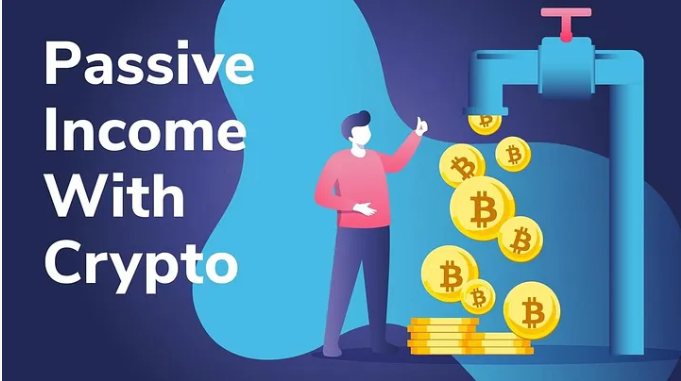What Is Staking and How Can You Earn Passive Income with Crypto?
Looking for a way to earn passive income with your crypto holdings? One of the most popular (and beginner-friendly) methods is staking.
Whether you’re holding Ethereum, Solana, or Cardano, staking allows you to put your crypto to work and earn rewards while supporting the blockchain network.
But what exactly is staking, how does it work, and what are the risks and benefits?
In this guide, we’ll break down how crypto staking works, how to get started, and how it can become a smart part of your crypto investment strategy.
🧠 What Is Staking?
Staking is the process of locking up your cryptocurrency in a blockchain network to support operations like validating transactions and securing the network.
In return, you earn staking rewards, usually paid in the same cryptocurrency.
This is only possible on proof-of-stake (PoS) blockchains, or blockchains that use a variation of PoS consensus mechanisms.
🔗 Staking vs. Mining (Key Difference)
-
Mining is used in proof-of-work systems like Bitcoin. It requires expensive hardware and lots of electricity.
-
Staking is used in proof-of-stake systems like Ethereum (post-merge), Solana, and Cardano. It’s energy-efficient and can be done by anyone with a supported wallet.
🔧 How Staking Works (Simplified)
-
You lock your tokens in a wallet or on a platform.
-
Those tokens are used to help validate transactions on the blockchain.
-
In return, you earn rewards, typically in the same token you staked.
Depending on the blockchain, you can stake directly or through a staking pool, where multiple users combine their funds for a better chance at earning rewards.
💸 How Much Can You Earn from Staking?
Staking rewards vary depending on:
-
The network (e.g., ETH, ADA, SOL)
-
The amount you stake
-
The duration
-
Network inflation or yield rates
Typical annual yields range from 4% to 20%, but rates fluctuate.
| Token | Typical APY |
|---|---|
| Ethereum (ETH) | 3% – 6% |
| Cardano (ADA) | 4% – 5% |
| Solana (SOL) | 6% – 8% |
| Polkadot (DOT) | 10% – 14% |
| Avalanche (AVAX) | 8% – 11% |
🛠️ How to Start Staking (Step-by-Step)
Option 1: Exchange Staking (Easiest)
Platforms like Binance, Coinbase, and Kraken offer one-click staking.
✅ Simple to use
✅ No technical setup required
🚫 Lower control or flexibility
🚫 Centralized
Option 2: Wallet Staking (More control)
Use wallets like:
-
Exodus (for ADA, SOL, ALGO, etc.)
-
Keplr (for Cosmos ecosystem)
-
MetaMask + Lido (for liquid ETH staking)
✅ More decentralized
✅ Full custody of your funds
🚫 Requires some setup
🚫 Gas/network fees may apply
Option 3: Run a Validator Node (Advanced)
You can run your own validator and earn rewards directly.
✅ Highest reward potential
🚫 High technical knowledge required
🚫 Minimum token requirements (e.g., 32 ETH for Ethereum)
🔐 Liquid Staking: Staking Without Locking Funds
Some platforms, like Lido Finance, offer liquid staking, where you get a tokenized version of your staked assets (like stETH for Ethereum). You can earn rewards and still use your funds in DeFi.
✅ Flexibility to use in DeFi protocols
🚫 Smart contract risk
⚠️ Risks of Staking
While staking can be lucrative, it’s not without risk:
-
Lock-up periods: Some tokens have unbonding times (e.g., 21 days for Cosmos)
-
Slashing: Misbehaving validators can get penalized, reducing your rewards
-
Smart contract bugs: Especially in DeFi and liquid staking protocols
-
Price volatility: If the token value drops, your rewards may not offset losses
👉 Tip: Stake only trusted tokens and use well-reviewed platforms or validators.
✅ Benefits of Staking
-
Earn passive income without trading
-
Support network security and decentralization
-
Low energy usage (eco-friendly)
-
Some tax advantages in certain jurisdictions (check local laws)
Final Thoughts
Staking is one of the simplest and safest ways to generate yield from your crypto holdings. Whether you choose to stake through an exchange, wallet, or validator, it’s a great way to earn passive income while helping secure the blockchain.
Just remember: always research the token, platform, and staking terms before locking up your assets.


